Tesla mystery solved: Exactly how much power your Model 3 and Model Y produces in Australia revealed
The Tesla Model 3 and Tesla Model Y produce plenty of power – but not quite as much as the EV company may have you believe.
While most people look at the government’s Australian Design Rule (ADR) certification documentation filed by Tesla as the source of how much power the innovative electric vehicles make, it turns out the real numbers are not quite as big.
Keep in mind that Tesla doesn’t quote power and torque outputs in its marketing material.
READ MORE: Tesla Model 3 vs Model Y: Which is the best EV for you?
Instead it relies on other metrics such as 0-100km/h times to tell the story of how fast and frenetic its various models are.
But we’ve done some digging to determine how much power the Tesla Model 3 and Tesla Model Y make.
Looking to China
Key to the performance outputs is the Chinese owner’s manuals for the Model 3 and Model Y.
Each has a section that shows exactly how much power the electric motors produce. It includes outputs for vehicles built in the US and those built in China.
As all Australian-delivered Model 3s and Model Ys are these days sourced from China, it’s those numbers we’ve zoomed in on (interestingly, the same motors from Chinese and American factories produce the same outputs, but the Chinese factory has five different types of motors versus three for US-manufactured Teslas).
Click here to see power outputs of the Model 3 motors as published in the Chinese owner’s manual
Click here to see power outputs of the Model Y motors as published in the Chinese owner’s manual
We’ve then aligned that data with Australian certification documentation provided as part of the Australian Design Rules (ADR) application process – and done some looking underneath cars – to work out which models have which motors.
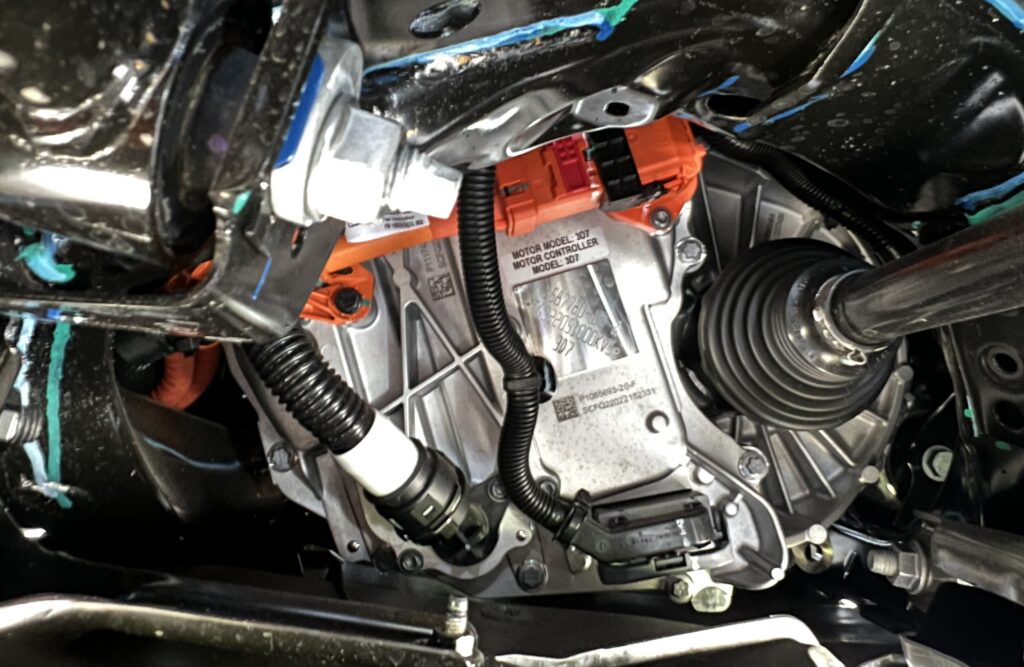
Our findings may surprise you.
Tesla Model 3 RWD
The Model 3 Rear-Wheel Drive has a single electric motor with the model code 3D7. According to Tesla its peak outputs are 194kW and 340Nm – which is about the same as a respectable hot hatch.
But it’s a lot less than the 208kW claimed by Tesla in the ADR certification documentation.
The power peaks at 5400rpm, which translates to 76km/h when taking into account the circumference of the tyres and the 9:1 reduction gear ratio.
As owners of older US-made Model 3s know, the original version of the most affordable Model 3 (previously known as the Standard Range Plus) had more power. That’s because the original SR+ used the 3D1 engine with 202kW and 404Nm.
| Motor code | Power | Torque | Speed at which peak power is produced |
| 3D7 (rear) | 194kW at 5400rpm | 340Nm | 76km/h |
Tesla Model Y RWD
The Model Y Rear-Wheel Drive uses exactly the same 3D7 motor fitted to the Model 3. It’s also got the same LFP battery pack.
So, according to Tesla, it also makes 194kW and 340Nm.
However, because of the larger wheels and tyres – 19-inch versus 18s on the M3 – it means the power peaks at 80km/h.
So there is effectively taller gearing – plus the Model Y weighs 157kg more than the Model 3 (we’ve weighed each independently).
| Motor code | Power | Torque | Speed at which peak power is produced |
| 3D7 (rear) | 194kW at 5400rpm | 340Nm | 80km/h |
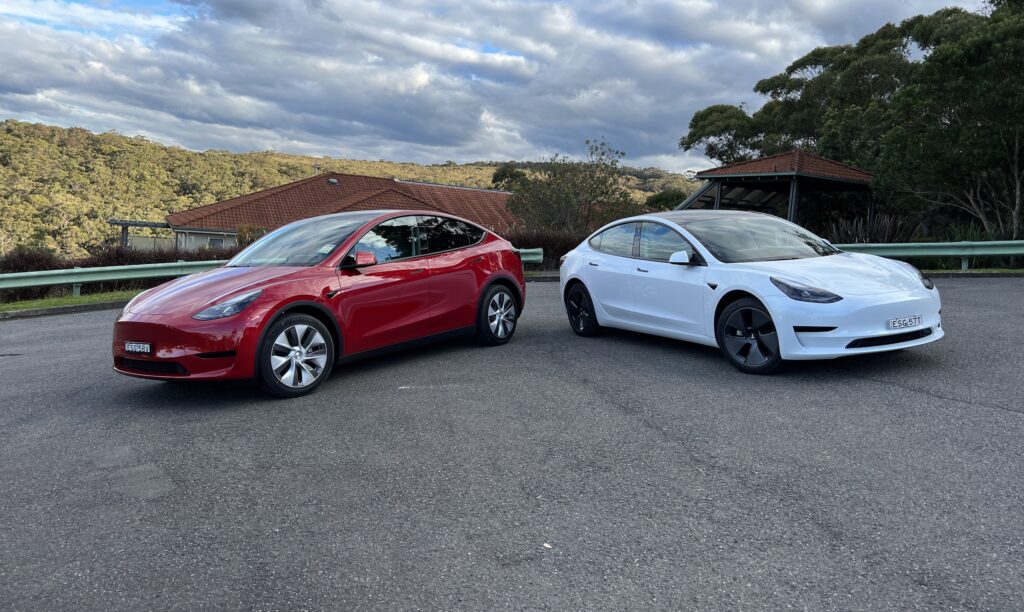
Tesla Model 3 Long Range
The Model 3 Long Range uses the same 194kW/340Nm 3D7 rear motor as the Rear-Wheel Drive but teams it with a 137kW/219Nm front motor (codenamed 3D3).
The temptation may be to add the two power outputs together to arrive at a theoretical maximum of 331kW.
However, the motors produce their peaks at different revs – and, therefore, different speeds, considering that 9:1 reduction ratio is used on the front and rear axles. So they never produce their peaks at the same time; the front 3D3 motor’s peak occurs at about 90km/h and the rear motor at about 76km/h.
Still, whatever the combined maximum is, it’s well below the 366kW reported in the ADR documentation.
| Motor code | Power | Torque | Speed at which peak power is produced |
| 3D3 (front) | 137kW at 6380rpm | 219Nm | 90km/h |
| 3D7 (rear) | 194kW at 5400rpm | 340Nm | 76km/h |
Tesla Model Y Long Range
It’s not on sale yet, although Tesla has certified the Model Y Long Range for sale in Australia.
The Model Y LR uses the same 3D3 front motor and 3D7 rear motor of the Model 3 LR.
That means 137kW/219Nm up front and 194kW/340Nm at the rear.
However, with larger tyres, its outputs arrive at different speeds to the Model 3; about 95km/h for the front motor and 80km/h for the rear.
Despite identical hardware, Tesla claimed in the certification documentation that the peak power is 378kW.
| Motor code | Power | Torque | Speed at which peak power is produced |
| 3D3 (front) | 137kW at 6380rpm | 219Nm | 95km/h |
| 3D7 (rear) | 194kW at 5400rpm | 340Nm | 80km/h |
Tesla Model 3 Performance
The pinnacle of the Model 3 range unsurprisingly makes the most power.
It uses the same 137kW/219Nm 3D3 front motor as the Long Range, leaving all the differentiation to the rear motor.
According to Tesla, the rear motor is codenamed 3D6 and makes 220kW and 440Nm.
So a theoretical maximum of 357kW, well below the 393kW ADR figure.
But, again, the peak outputs of front and rear motors are produced at different speeds, so you can’t simply add the two peaks.
Accounting for the different tyre sizes front and rear, the Model 3 Performance’s 3D3 front motor makes its 137kW at about 90km/h and the 3D6 rear motor at 77km/h.
| Motor code | Power | Torque | Speed at which peak power is produced |
| 3D3 (front) | 137kW at 6380rpm | 219Nm | 90km/h |
| 3D6 (rear) | 220kW at 5000rpm | 440Nm | 77km/h |
Tesla Model Y Performance
Unsurprisingly, the Tesla Model Y Performance uses the same hardware as its Model 3 sibling.
That means the 3D3 front motor making 137kW/219Nm and the 3D6 rear motor with 220kW/440Nm.
The bigger body means it’s heavier than the Model 3 Performance, one reason acceleration is a tad slower.

But it’s also down to the 21-inch tyres – wider at the rear – with a bigger circumference.
In the Model Y Performance the front motor provides peak power at 95km/h and the rear motor at 76km/h.
| Motor code | Power | Torque | Speed at which peak power is produced |
| 3D3 (front) | 137kW at 6380rpm | 219Nm | 95km/h |
| 3D6 (rear) | 220kW at 5000rpm | 440Nm | 76km/h |
Battery performance
There’s another factor at play here: batteries.
An EV will only produce as much power as its battery pack can supply.
In other words, it doesn’t matter how much power the motor is rated to make, if the battery can’t supply the power, then it won’t happen. That’s one reason a Porsche Taycan or Mercedes-Benz EQE53 AMG makes less power once the battery has a lower state of charge.
And the Nissan Leaf e+ gets the same electric motor as the regular Leaf, but it makes more power courtesy of the bigger battery pack.
Tesla has changed battery chemistry and suppliers over the years, something that may have had an impact on performance; working that part out is a lot trickier.
With its Model 3 Performance, for example, some are built with Panasonic batteries and others with LG. Tesla listed two different power outputs – 377kW and 393kW – when certifying the cars for sale with the government.

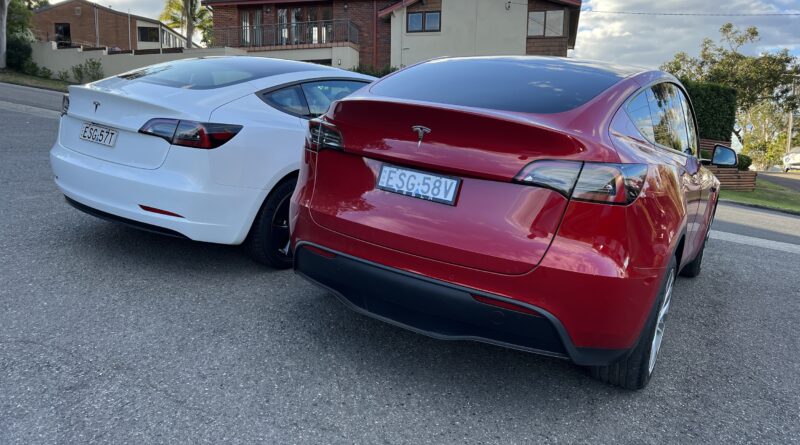

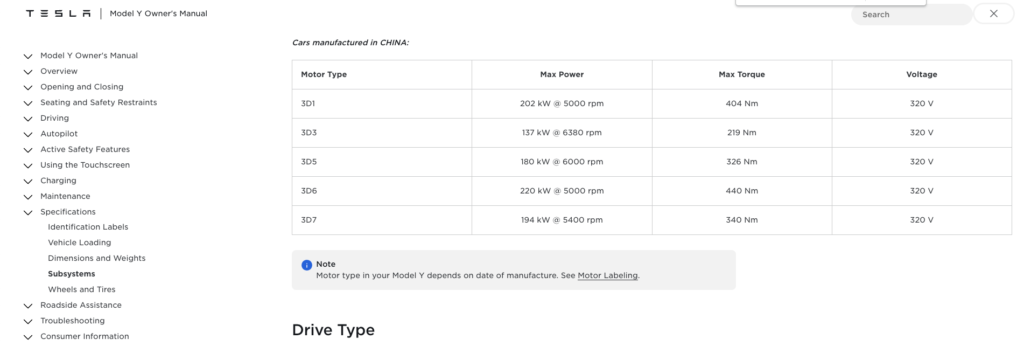

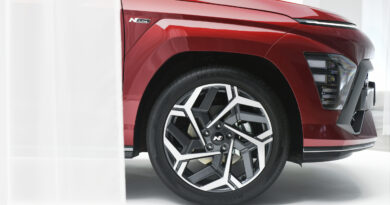
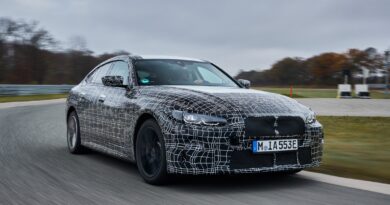
Note that for a short period around Oct- Nov 2021, Tesla used the 3D6 motor (220kW, 440Nm) in the last of their SR+ cars – the so called “unicorn” cars. These were noticeably faster than the 2022 cars that replaced them, but with less range (around 430 km real world range). I have one of these and can confirm the 3D6 label on the motor.
Our 2021 Made in China Model 3 SR+ (RWD) has a 3D6 motor.